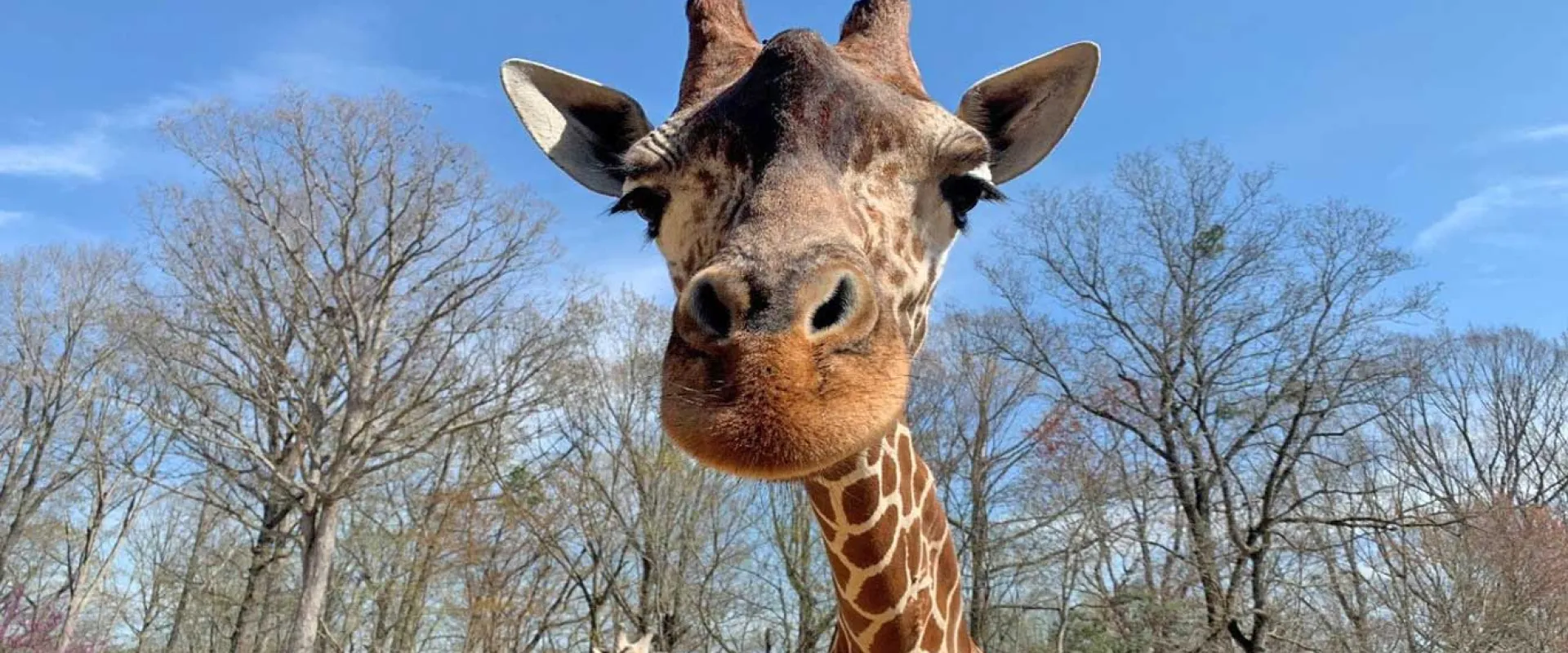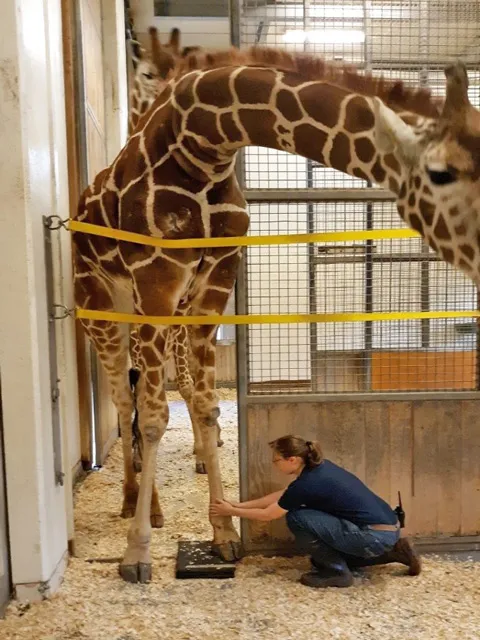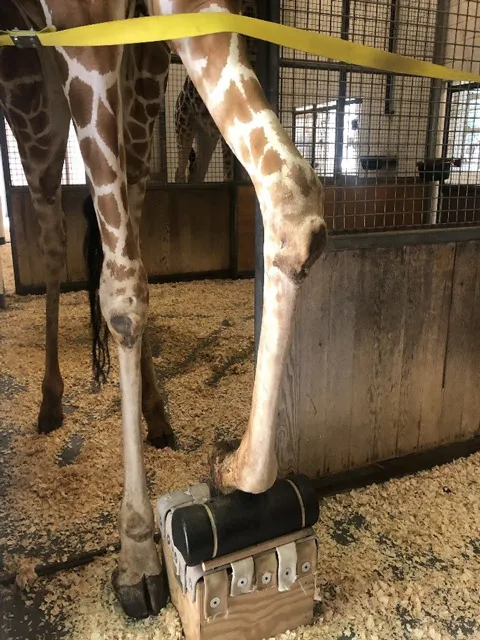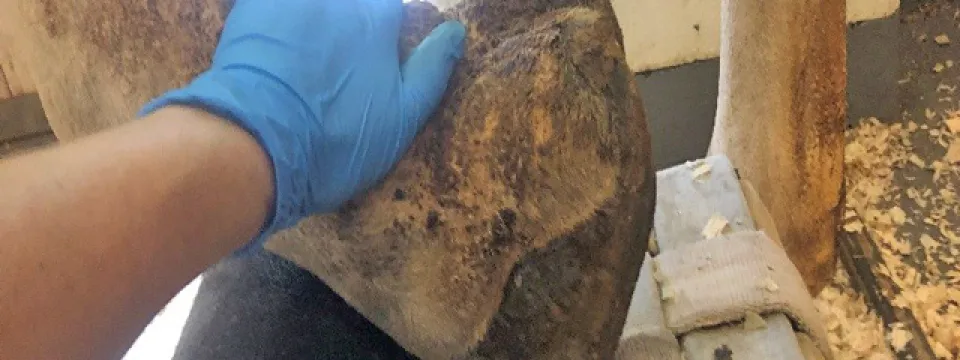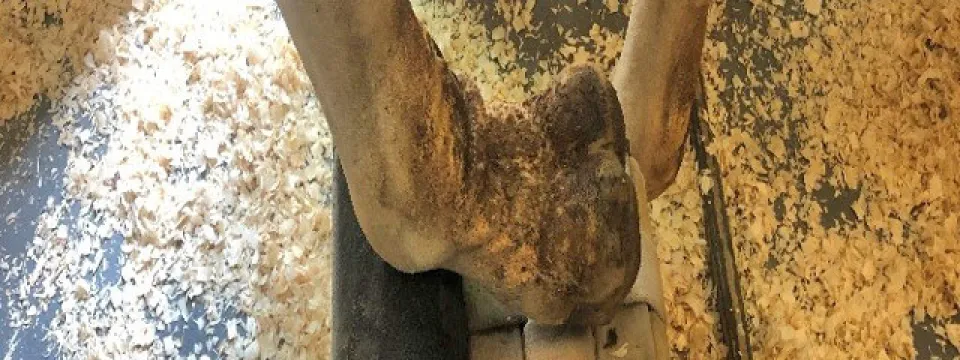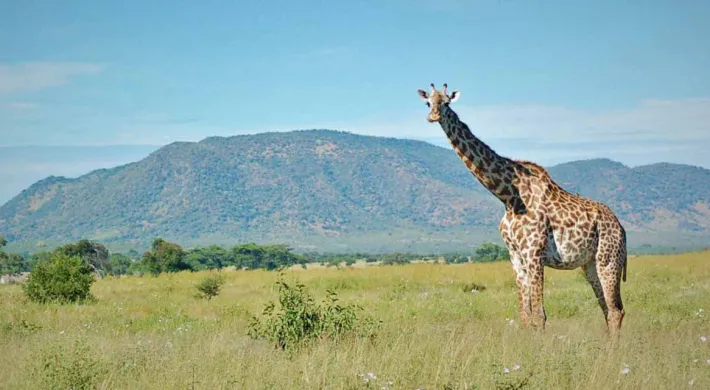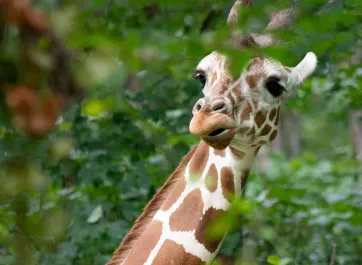Written by Mary Wilson-Carrigan, Zookeeper, North Carolina Zoo
Have you ever wondered what goes on behind the scenes in the North Carolina Zoo giraffe barn? I am sure one of your first thoughts was giraffe pedicures, right? The giraffe keepers are always on the lookout to improve the zoo's training program from eyes to hooves!
In the past, training sessions with the giraffes were held in a very controlled setting. One trainer. One animal. No outside noise. No strangers. Our current training philosophy is far from our past! We cannot predict what random sounds might enter our barn each day. These sounds can range from new staff voices to dropping an instrument during a veterinary exam. We want our tower (a group of giraffe) to be desensitized to those unpredictable sounds and remain as unphased as possible.
We have slowly incorporated new sounds and additional people during training sessions to desensitize the giraffe. To limit the fear of stranger danger, we have any new giraffe accompanied by the familiar face of one of their keepers. This strategy has helped us minimize the potential stress of unfamiliar faces and, in turn, make it possible to share our sessions with new interns, training consultants, and vet staff.
We also strongly believe in giving our giraffes the choice to participate in their training. What is choice? When training our giraffes, we want them to participate in the sessions willingly. Sessions are set up in a way that provides them the room to walk away from their trainers if they want a break. Thus, giving them the choice to participate as they please. Willful participation is key with giraffes, as even our strongest keeper cannot physically move around a 1,200lb+ animal! When our giraffes decide to train with us, we believe in using positive reinforcement.
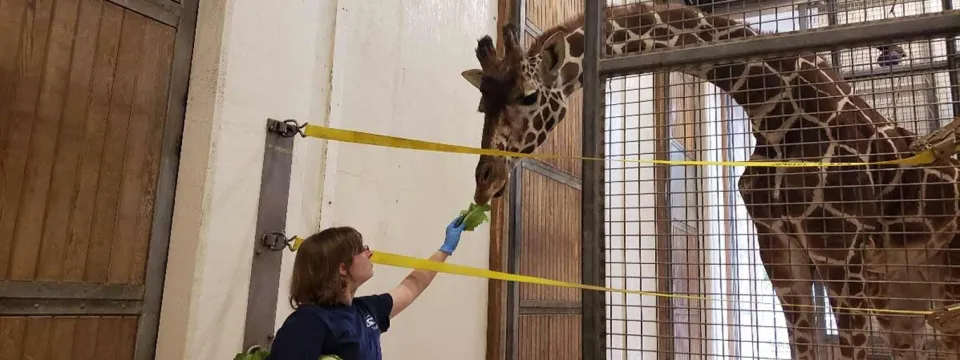
Pictured Above: Zookeeper Kelly rewarding Turbo
Our giraffes do not work for free! During our sessions, keepers make sure to have some of our towers' favorite treats on hand. Some of their rewards may include romaine lettuce, carrots, and sweet potatoes. After a giraffe displays a desirable behavior the trainer asked for, they are rewarded for their efforts with a treat, which positively reinforces the behavior. Our giraffes love their treats. So over time, they have really enjoyed participating in their sessions to earn an extra snack!
One of our current training focuses on hoof work. Who doesn't like a relaxing pedicure? Working with such large animals requires more planning and safety measures than any pedicure you may have received in the past. We work in a protected contact set-up where keepers can touch the animals but have some type of protection between them and the animal to minimize injury risks. Heavy-duty straps are used at a giraffe's chest level to keep the giraffe from moving too far forward and keep them out of the same space as the keepers. Once the straps are in place, the keepers place a hoof box where they would like the giraffe to lift and place their hoof on top. The keeper, at hoof level, positions themself behind a barrier, such as a wall or a stall door. Another keeper is positioned in front of the giraffe, directing them forward and into the proper position for the hoof level keeper to work
During the sessions, the giraffes are rewarded as they move into position and step up onto the hoof box. Once the giraffe has stepped up onto the box, the keepers will ask the giraffe to curl (bending their leg forward, exposing the bottom of their foot to the keeper) their foot on the box. Once the keeper can see the hoof, they can work on filing, trimming down, and reshaping the hoof as needed. Our hoof work is a vital part of our preventative care. As you can imagine walking on overgrown nails would be painful and could cause a giraffe to experience lameness (abnormal stance or gait). -Don't worry, the keepers skip adding any polish!
Pictured Above: Turbo curling on hoof box
Some other training sessions you might see in the barn are: vaccine injection, chute/touch desensitizing, blood draws, scale/weight, radiographs, or even thermography. The giraffe team is always on their toes (metaphorically and sometimes literally as one of our bulls stands roughly 16ft tall!) and looking for new behaviors to help them receive the best care possible. We hope to work on training for eye exams, ultrasounds, and an open mouth behavior in the future. The next time you visit the North Carolina Zoo, make sure to stop by and compliment the giraffes on their hooves!
Tall regards,
The Giraffe Keepers at the North Carolina Zoo
